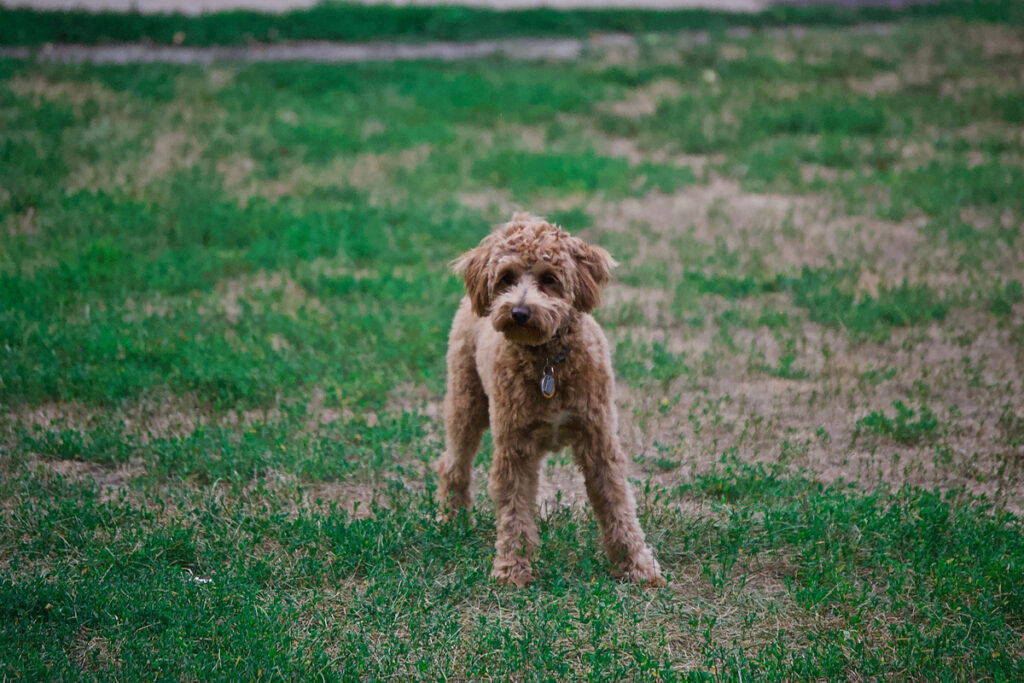The 6 Smartest Dog Breeds for Training

If you’re looking for a new furry friend who is quick to learn and eager to please, then you’ll want to consider one of the smartest dog breeds for training. These breeds are not only intelligent but also possess a natural desire to work and be active, making them ideal companions for those who enjoy outdoor activities or have an interest in competitive sports such as agility or obedience trials.
Among the top contenders for the title of smartest dog breed are:
- Border Collie
- Poodle
- German Shepherd
- Golden Retriever
- Labrador Retriever
- Australian Cattle Dog
Each of these breeds has unique characteristics that make them well-suited for different types of training. In this article, we will take a closer look at what makes these dogs so intelligent and how you can tap into their potential by using effective training techniques.
- Border Collie
- Poodle
- German Shepherd
- Golden Retriever
- Labrador Retriever
- Australian Cattle Dog
- Training Tips
- Conclusion
- Frequently Asked Questions
- What are the smartest dog breeds for training?
- How do Border Collies excel in training and what types of activities are they suited for?
- Are Poodles easy to train and what should I know about grooming and health concerns?
- What makes German Shepherds suitable for law enforcement training?
- How can I train an Australian Cattle Dog effectively and what are their unique characteristics?
Border Collie
You won’t find a better dog for training than the Border Collie – they’re like the Olympic athletes of the canine world, with a laser focus and innate intelligence that puts them leagues above other breeds.
Their herding instincts make them highly trainable, as they are used to following commands and working closely with their owners. This drive also makes them excel in agility training, where they can navigate complex courses with ease.
Border Collies have been bred for generations to be quick learners and problem solvers. They are able to understand new commands after just one or two repetitions, which is why they are perfect for advanced training techniques like agility courses or herding competitions. They are able to pick up on subtle cues from their handlers and can adapt quickly to new situations.
The combination of their intelligence, herding instincts, and agility skills make Border Collies one of the smartest dog breeds around. However, they do require a lot of mental stimulation and physical exercise to keep them happy and healthy.
Now let’s move on to another breed known for its intelligence – the poodle.
Poodle

When considering a Poodle for your furry companion, it’s important to know that they are highly trainable and excel in obedience competitions. This breed is known for their intelligence and willingness to learn new tricks and commands. They have a great memory which allows them to remember different commands even after some time has passed.
One thing to keep in mind when owning a Poodle is their grooming needs. Their fur requires regular maintenance including brushing, trimming, and bathing. If not properly groomed, their fur can become matted which can lead to skin irritations or other health problems.
In terms of health concerns, Poodles are prone to certain genetic conditions such as hip dysplasia and progressive retinal atrophy (PRA). However, these conditions can be minimized by purchasing from a reputable breeder who screens their dogs for potential genetic issues. If you take care of your Poodle properly with proper grooming and veterinary checkups, they can live long healthy lives.
Moving on from the Poodle, the next breed we will discuss is the German Shepherd – another popular choice for those seeking a highly intelligent dog with excellent training abilities.
German Shepherd
If you’re considering getting a German Shepherd, it’s important to know that they’re a strong and loyal breed often used in law enforcement.
They’re eager to please and learn new tasks, making them great candidates for training.
However, early socialization and training is crucial for this breed to ensure they develop into well-behaved and obedient companions.
Strong and loyal breed often used in law enforcement
Looking for a strong and loyal breed to train for law enforcement? Consider adding the German Shepherd to your list. These dogs are known for their intelligence, obedience, and ability to quickly learn new tasks.
Here are some reasons why they make excellent law enforcement dogs:
- Strong Work Ethic: German Shepherds have a natural drive to work hard and please their handlers, making them an ideal choice for law enforcement training.
- Fearless: This breed isn’t easily intimidated and can handle high-pressure situations with ease.
- Versatile: German Shepherds can be trained in many different areas such as search and rescue, drug detection, and patrol.
- Loyal Companions: They’re fiercely loyal to their handlers, which makes them great partners in dangerous situations.
Now that you know why German Shepherds are a popular choice for law enforcement training, let’s move on to another important trait – eagerness to please and learn new tasks.
Eager to please and learn new tasks
With their eagerness to please and knack for learning new tasks, German Shepherds are a natural fit for law enforcement work. They’re quick learners and excel in obedience training, tracking, and search-and-rescue missions. Effective training methods include positive reinforcement techniques such as praise, treats, and playtime. Consistency is key when training German Shepherds as they thrive on routine.
Training your German Shepherd not only benefits their physical abilities but also has positive effects on their mental health. Mental stimulation through training can improve cognitive function and reduce anxiety or behavioral issues. It also strengthens the bond between owner and dog, leading to a happier relationship overall.
However, it’s important to note that German Shepherds require early socialization and training to prevent aggression towards strangers or other animals.
Require early socialization and training
Early socialization and proper training are crucial for German Shepherds to prevent aggression towards strangers or other animals. As a highly intelligent breed, German Shepherds require extensive mental stimulation and physical exercise to keep them happy and healthy. Here are three effective ways to mentally stimulate your furry friend:
- Puzzle toys: These interactive toys challenge your dog’s cognitive abilities and provide an opportunity for problem-solving.
- Obedience training: Consistent obedience training using positive reinforcement techniques like rewards, treats, or praise can help establish a strong bond between you and your dog while also keeping their minds active.
- Agility training: This type of training involves setting up obstacle courses for your dog that they must navigate through, which improves coordination skills and provides physical exercise.
It’s important to note that this breed also benefits from early socialization and positive reinforcement techniques in various forms of training as you transition into the next section about golden retrievers.
Golden Retriever
You can’t go wrong with a Golden Retriever when it comes to training the smartest dog breeds. These dogs are known for their intelligence, trainability, and eagerness to please their owners. They love learning new tricks and are always up for a challenge.
When it comes to grooming your Golden Retriever, it’s important to brush their coat regularly to prevent matting and tangling. This breed sheds quite a bit, so you’ll need to vacuum often and invest in some quality grooming tools. In terms of health concerns, Golden Retrievers are prone to hip dysplasia and cancer, so regular check-ups with your veterinarian are crucial.
Next up on our list of smartest dog breeds for training is the Labrador Retriever. These lovable pups share many traits with their Golden counterparts but have a few key differences that make them unique.
Labrador Retriever
The Labrador Retriever, also known as the Lab, is one of the most popular breeds in the United States and has been for over 30 years. These dogs are known for their friendly and outgoing nature, making them perfect family pets.
But they’re also highly intelligent dogs that excel in a variety of tasks, including retrieving game, assisting people with disabilities, and serving as search-and-rescue dogs. When it comes to training techniques, Labs respond well to positive reinforcement. They thrive on praise and treats, so using these methods during training sessions can help keep them motivated.
It’s important to start training early in a Lab’s life because they have a tendency to become stubborn if not trained properly. Consistency is key when it comes to training any dog breed, but especially with Labs.
Overall, the Labrador Retriever is an excellent choice for those looking for a smart and trainable dog breed. With their intelligence and willingness to please their owners, they can excel in various activities such as obedience competitions or even just playing fetch in the backyard.
Up next we’ll take a look at another highly intelligent breed – the Australian Cattle Dog.
Australian Cattle Dog

With their remarkable intelligence and adaptability, the Australian Cattle Dog is a breed known for excelling in various activities. This breed has a rich history and origin dating back to the early 1800s when they were bred as working dogs on ranches in Australia.
They were developed to herd cattle over long distances, withstand harsh weather conditions, and have incredible stamina. In terms of physical characteristics, Australian Cattle Dogs are medium-sized dogs with a muscular build that allows them to work tirelessly all day. They have short coats that come in blue or red speckled patterns and require minimal grooming.
Temperament-wise, these dogs are highly energetic, intelligent, and independent. They thrive on activity and require plenty of mental stimulation to prevent boredom. If you’re considering training an Australian Cattle Dog, keep in mind that they respond best to positive reinforcement techniques that reward good behavior rather than punish bad behavior.
Training sessions should be kept short but frequent to hold their attention spans better. It’s also essential to provide them with plenty of exercise opportunities such as going for runs or playing fetch regularly. By understanding these unique traits of this breed and applying effective training techniques, you can help your Australian Cattle Dog reach its full potential as an obedient companion.
Training Tips
When it comes to training your Australian Cattle Dog, there are a few key tips that can make all the difference.
First and foremost, positive reinforcement techniques are essential for encouraging good behavior and building a strong bond with your pup.
Additionally, consistency and patience are crucial for ensuring that your dog understands what’s expected of them and feels confident in their abilities.
Finally, socialization and mental stimulation are important for keeping your dog happy, healthy, and well-adjusted.
By following these tips, you can help your Australian Cattle Dog become a well-behaved and well-rounded companion.
Positive reinforcement techniques
You can easily teach your smart dog new tricks using positive reinforcement techniques. This involves giving rewards such as treats and praise for good behavior. This approach has been found to be highly effective in increasing learning speed by up to 50%.
However, it’s important that you pay attention to your body language and timing of rewards in order to maximize the impact of positive reinforcement. When using positive reinforcement, it’s essential that you deliver the reward immediately after the desired behavior occurs. This helps your dog associate the behavior with the reward and reinforces their understanding of what they’re supposed to do.
Additionally, make sure that you use consistent body language cues when teaching new behaviors. For example, if you want your dog to sit, try holding a treat above their head while simultaneously saying “sit.”With consistency and patience, positive reinforcement can help transform even the most stubborn pup into a well-trained companion.
Consistency and patience
Now that you’ve learned about positive reinforcement techniques, it’s time to talk about the importance of consistency and patience when training your dog.
Consistency means using the same commands, rewards, and consequences every time you train your dog. This helps your dog understand what is expected of them and reinforces good behavior. On the other hand, inconsistency can confuse your dog and make it harder for them to learn.
Patience is also crucial when training your dog. Dogs learn at their own pace, so it’s important not to rush or get frustrated if they don’t pick up a command right away. By being patient with your furry friend, you’ll create a more positive learning environment and help build a stronger bond between you two.
The benefits of patience are numerous – not only will it make training more enjoyable for both you and your pup, but it will also lead to better results in the long run.
As you continue on this journey of training your furry companion, remember that socialization and mental stimulation are just as important as consistency and patience.
By exposing your dog to different people, animals, environments, and activities early on in their life, you’ll help them become well-rounded individuals who are confident in any situation.
So let’s dive into why socialization and mental stimulation matter for dogs!
Importance of socialization and mental stimulation
To truly foster a well-rounded and fulfilled companion, it’s crucial to prioritize socialization and mental stimulation in your furry friend’s life. Dogs are social animals that thrive on human interaction and companionship.
Socialization can help them develop positive behaviors around other dogs, people, and new environments. This will not only make your dog more confident but also reduce the likelihood of aggressive behavior.
Mental stimulation is just as important as physical exercise for dogs. Providing activities that engage their minds can prevent boredom, anxiety, and destructive behavior such as chewing or digging. Some ways to mentally stimulate your dog include puzzle toys, training sessions with rewards-based methods, and scent games.
It’s important to understand that every dog is different and may require different types of mental stimulation depending on their breed or personality. By prioritizing both socialization and mental stimulation in your dog’s life, you’ll be able to provide them with a happy, healthy lifestyle that they deserve.
Conclusion
Congratulations! You’ve made it to the end of this informative article about the smartest dog breeds for training. By now, you should have a good understanding of which breeds are known for their intelligence and trainability.
From Border Collies to Australian Cattle Dogs, these breeds are not only easy to train but also excel in various activities such as agility, obedience, and even herding. But keep in mind that each breed has its own unique characteristics and requires different types of training techniques.
As they say, ‘practice makes perfect,’ so make sure to dedicate enough time and effort into your furry friend’s training sessions. And always remember that patience is key when it comes to teaching your dog new things.
In conclusion, whether you’re looking for a loyal companion or an active partner in crime, choosing one of these smartest dog breeds will surely make your life more exciting and fulfilling. As the old saying goes, ‘A well-trained dog is a happy dog.’ So start training your pup today and watch them thrive!
Frequently Asked Questions
What are the smartest dog breeds for training?
The smartest dog breeds for training include Border Collies, Poodles, German Shepherds, Golden Retrievers, Labrador Retrievers, and Australian Cattle. These breeds possess high intelligence and a natural desire to learn and please their owners, making them excellent candidates for training.
How do Border Collies excel in training and what types of activities are they suited for?
Border Collies excel in training due to their herding instincts, quick learning ability, and problem-solving skills. They are well-suited for activities like agility training and herding competitions, where they can navigate complex courses with ease.
Are Poodles easy to train and what should I know about grooming and health concerns?
Poodles are highly trainable and known for their intelligence. They have a great memory and are willing to learn new tricks and commands. However, Poodles require regular grooming to maintain their fur, and they may be prone to genetic conditions such as hip dysplasia and progressive retinal atrophy (PRA).
What makes German Shepherds suitable for law enforcement training?
German Shepherds are strong, loyal, and intelligent dogs, which makes them ideal for law enforcement training. They have a strong work ethic, fearlessness in high-pressure situations, versatility in different areas such as search and rescue or drug detection, and they form loyal bonds with their handlers.
How can I train an Australian Cattle Dog effectively and what are their unique characteristics?
Training Australian Cattle Dogs requires positive reinforcement techniques that reward good behavior. These dogs are highly intelligent, adaptable, and independent. They thrive on activity and mental stimulation, so providing regular exercise opportunities and engaging their minds with puzzle toys or obedience training can help them reach their full potential as obedient companions.
Read more:


















































